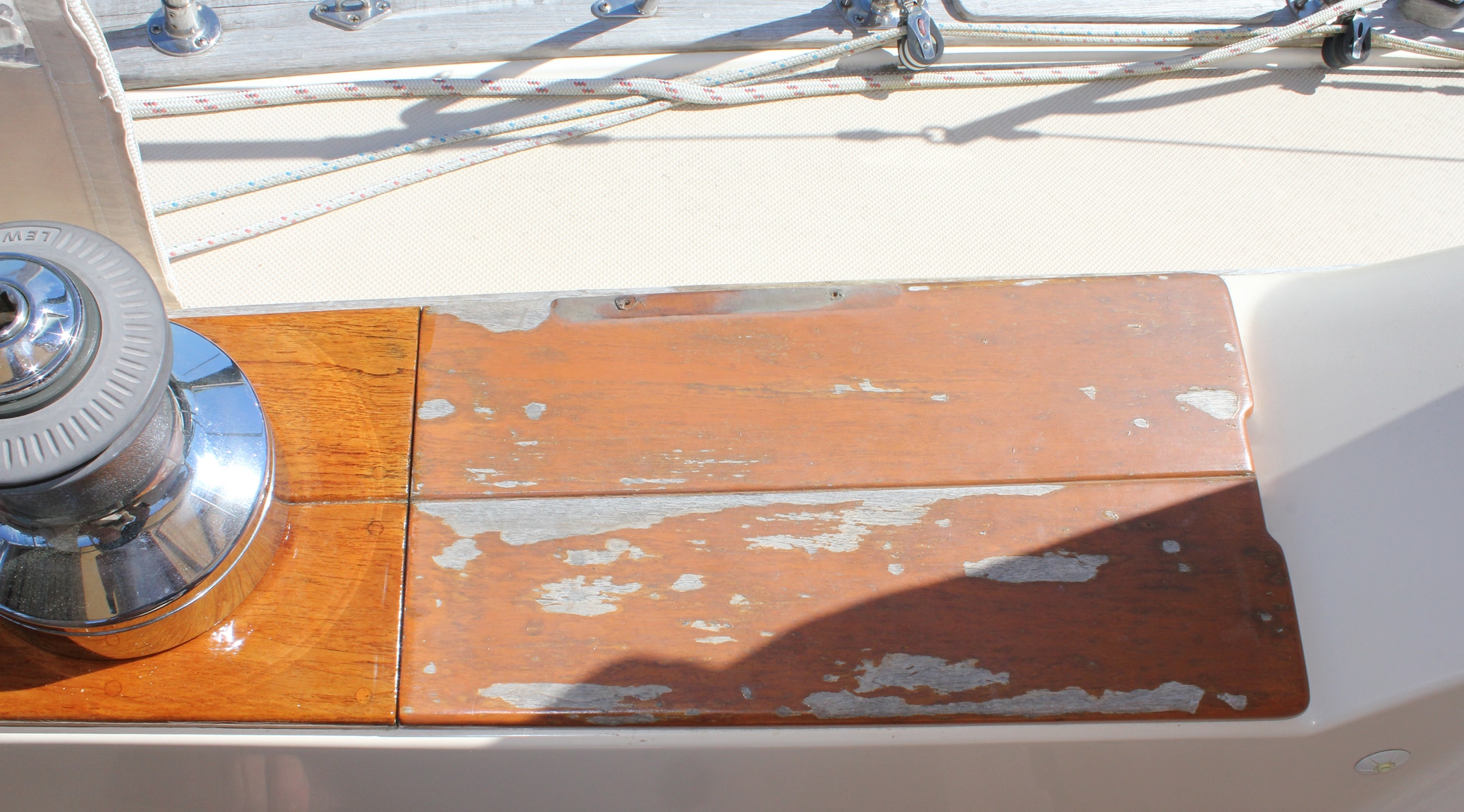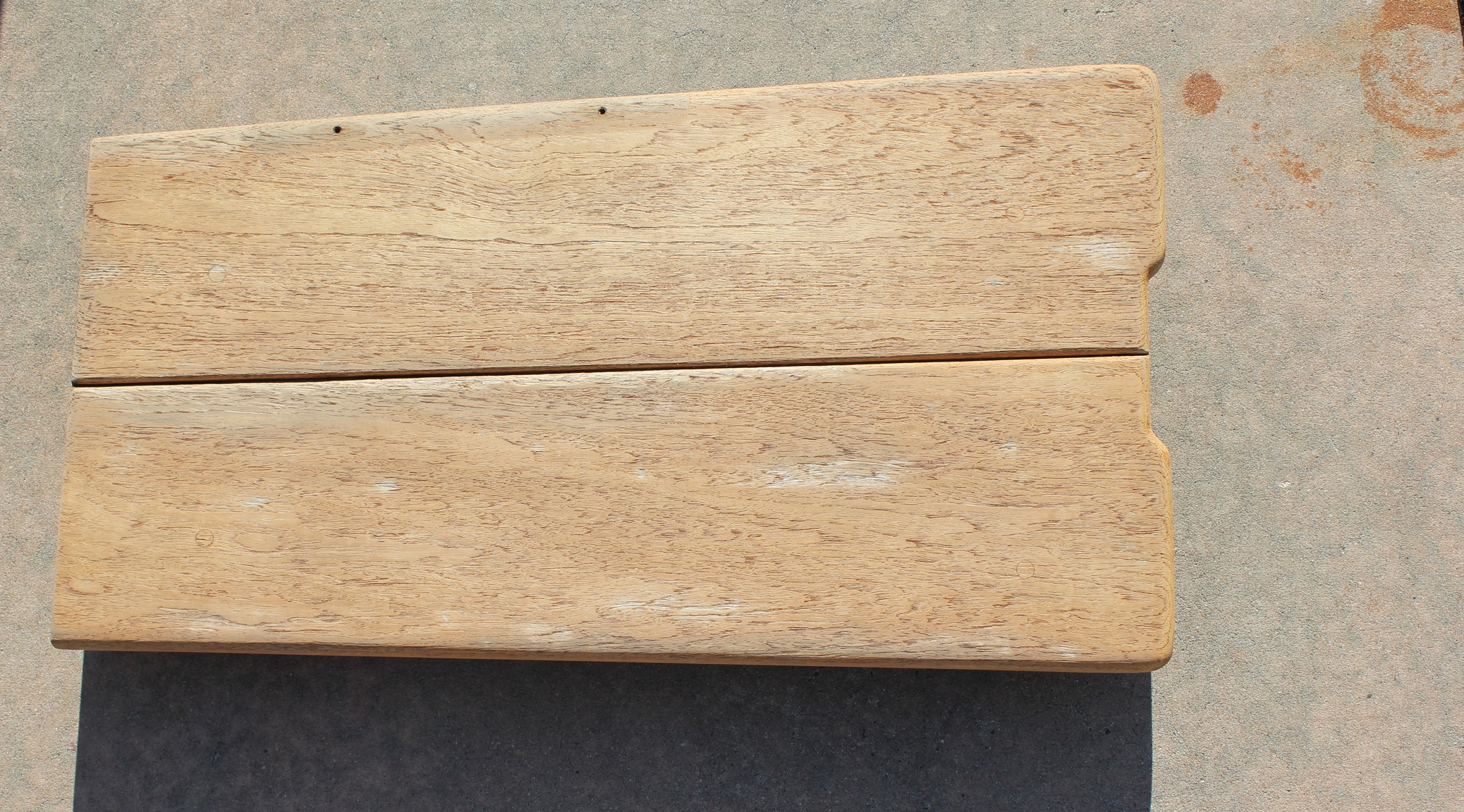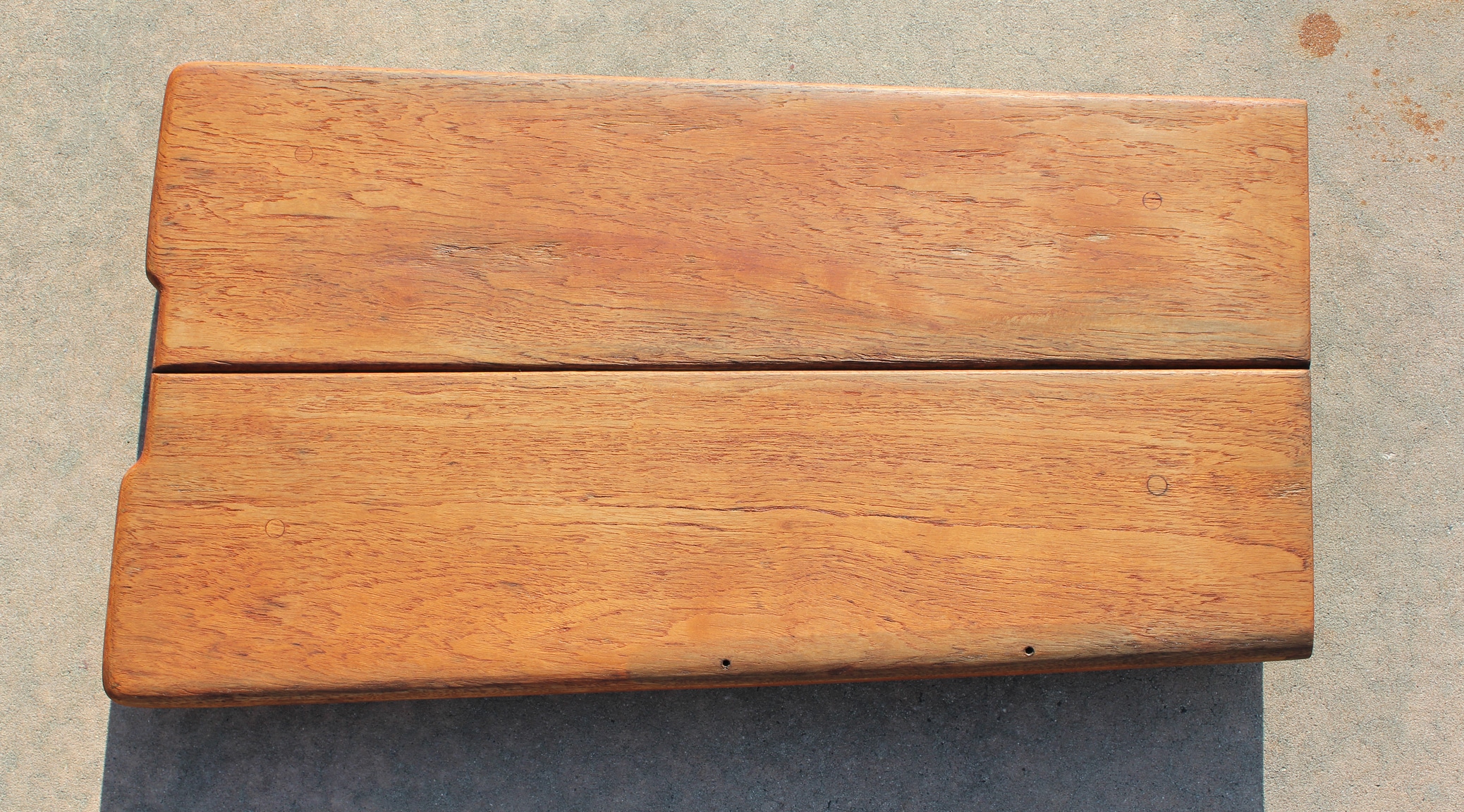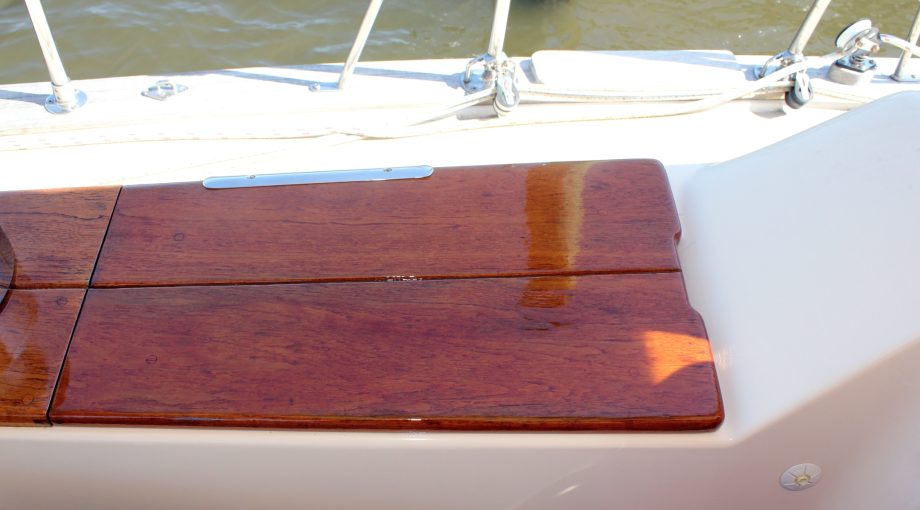After trying every other possible teak treatment, including no treatment at all, we decided last year to take the plunge with varnish. We have a lot of external teak on our boat and knew that initially this was going to be a big job. Thankfully, the way the teak is laid out on the boat lends itself to doing this project in small sections so as not to be overwhelmed. We started with the teak on the cockpit coaming (the raised boarder around the cockpit). The value of varnish, at least to us, is two-fold. First, it looks nicer by a long shot than any other exterior teak finish. Second, if the initial application is done right, the annual maintenance is minimal to protect the wood and keep it looking great.
When we got the boat, it had a deteriorating coat of Cetol on most of the exterior teak surfaces. Here’s a section of the coaming as it looked before we did anything.







At this point the varnish was applied. We followed a varnish application schedule outlined in Rebecca Whitman’s superb book “Brightwork”. Basically, it consisted of eight coats of varnish with sanding in between each coat. Only foam brushes were used. This part of the project was the least amount of labor. It only took about ten minutes to sand and apply a new coat of varnish to a section of teak this size. However, this part of the project also consumed the most amount of total time, mainly because of having to wait 24 hours between each of the eight coats. In addition, the weather conditions had to be just right, so a few days were added at various points waiting for weather.
The final result was a gorgeous mirror-like finish which will only require a very light sanding and a single refresher coat next year.

